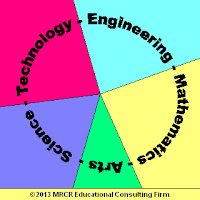Importance of STEAM Education Evaluation
Author: Manuel R. CortezRodas
Definition of STEAM Education Evaluation
Evaluation places a value on the education that students have received. To know the value of the education students have received, the students must be able to demonstrate what they know. For students to demonstrate what they know, we, as educators, must rely upon, and use a variety of tools which help us determine the value of the knowledge the student has learned.
Purpose of STEAM Education Evaluation
Evaluation of STEAM Education serves two purposes: To give the student an opportunity to share the knowledge they have gained, and for the educator to have the chance to check for accuracy of knowledge and improve future presentations of such to other students. it is not the purpose of STEAM Education evaluation to either correct the student's knowledge, or to place a value on the educator's presentation of the instruction of educational material.
Measuring STEAM Education Evaluation
Evaluation can be measured, as mentioned earlier, using a variety of tools. Which measuring tool we use to evaluate STEAM education depends on the knowledge that students have received, and the student's ability to accurately demonstrate and communicate, the received knowledge. The following three tools have proven to be reliable and dependable for measuring student's acquired knowledge. These are: Assignments, Projects, and Tests. When measuring STEAM Education Evaluation, we must keep present two factors: The quantity of time a student has to share their knowledge, and the environment and resources that the student has access to while preparing to share their knowledge.
Analyzing STEAM Education Evaluation
Evaluation of STEAM Education should be analyzed to acquire further understanding of the knowledge that educators have instructed to students, and how students demonstrate their knowledge. The analysis we do of STEAM Education should be recorded, stored, and preserved, so that we may have a source of information when presenting justification for the value of the student's education. We must also study the analysis of the evaluation, so that we may become aware of any patterns that may emerge over time.
Copyright 2013. MRCR Educational Consulting Firm. All Rights Reserved.



